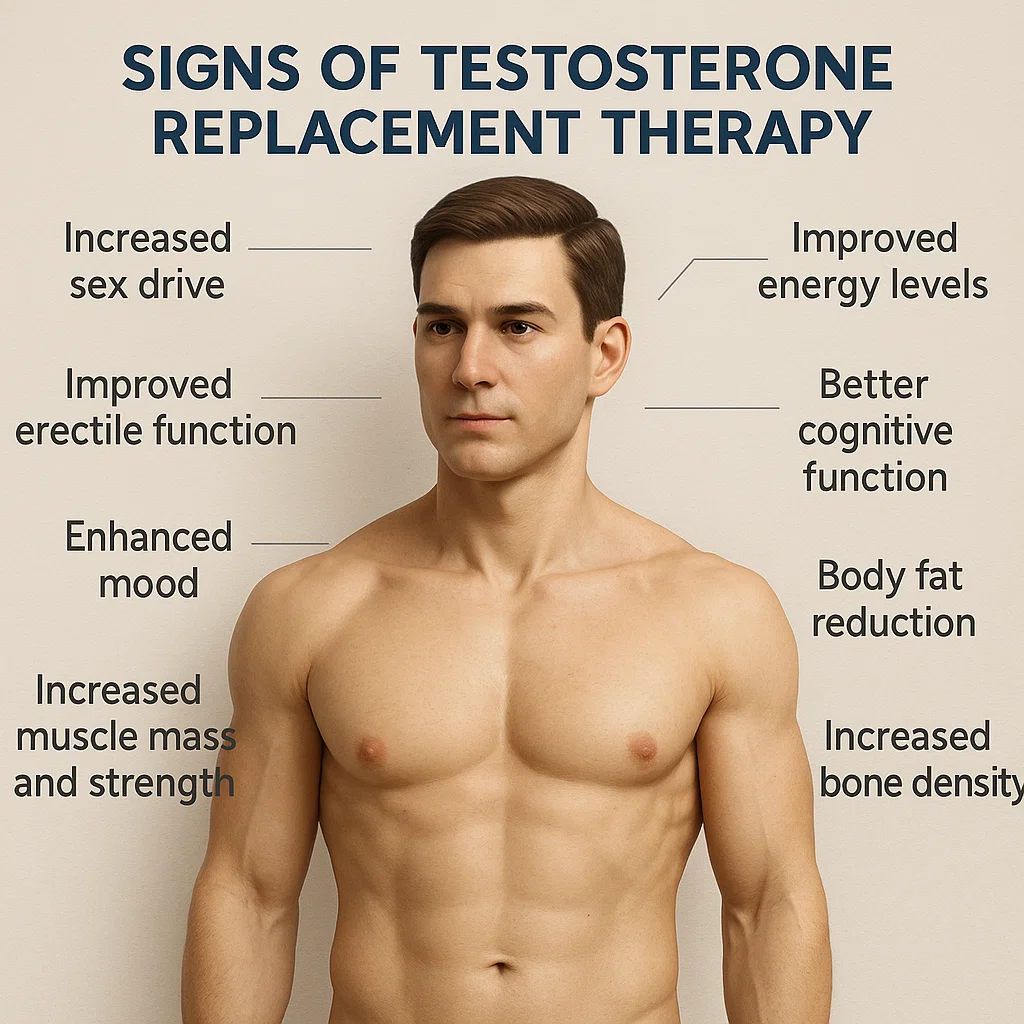Testosterone Replacement Therapy (TRT) has become an increasingly common treatment for men experiencing low testosterone levels, a condition known as hypogonadism. Testosterone plays a vital role in male health, affecting everything from energy levels to mood, muscle mass, libido, and bone density. When levels drop, the symptoms can be frustrating and disruptive—but TRT can offer relief. Understanding the signs that TRT is working (or not) is crucial for managing expectations and evaluating effectiveness.

What Is Testosterone Replacement Therapy?
TRT is a medical treatment that increases testosterone levels in men with clinically low levels. This can be administered through various methods such as injections, gels, patches, or implants. The goal is to restore testosterone to normal physiological levels and alleviate symptoms related to testosterone deficiency.
Positive Signs TRT Is Working
When TRT is effective, many men begin to notice improvements within weeks or months of starting therapy. Common positive signs of successful testosterone replacement therapy include:
1. Increased Energy Levels
Fatigue is one of the most common symptoms of low testosterone. A boost in overall energy and motivation is often one of the first noticeable effects of TRT, typically within 3–6 weeks.
2. Improved Libido and Sexual Function
Low sex drive and erectile dysfunction can be directly linked to low testosterone. Many men report a revived sex drive and improved sexual performance after beginning TRT, often noticeable within a month.
3. Better Mood and Mental Clarity
Testosterone plays a role in emotional regulation. Some men experience reduced irritability, less depression, and improved mental focus and memory on TRT.
4. Increased Muscle Mass and Strength
Testosterone is anabolic, meaning it promotes muscle growth. With proper exercise and diet, men on TRT may notice an increase in lean muscle mass and physical strength over several months.
5. Reduced Body Fat
Some users report a reduction in body fat, particularly around the midsection, which often coincides with muscle gain.
6. Improved Sleep
Low testosterone is sometimes linked to insomnia or disrupted sleep patterns. TRT may help improve sleep quality, although results can vary.
Possible Signs TRT Isn’t Working or Needs Adjustment
While many experience benefits, not everyone sees immediate or dramatic improvements. Possible signs TRT may not be working as expected include:
No improvement in symptoms after several months
Worsening mood or anxiety
Persistent fatigue
Side effects such as acne, hair loss, breast tenderness, or increased aggression
In such cases, it's important to work with a healthcare provider to reassess dosage, delivery method, or check for other underlying health issues.
Monitoring and Safety
TRT should always be administered and monitored by a healthcare professional. Blood tests are essential to ensure testosterone levels remain in a safe range and to watch for potential side effects like high red blood cell counts, liver enzyme changes, or prostate issues.
Conclusion
Testosterone Replacement Therapy can be life-changing for men suffering from low testosterone, but its effectiveness varies. Recognizing the signs that TRT is working—like improved energy, mood, libido, and muscle mass—can help guide treatment. Regular medical supervision is key to maximizing benefits and minimizing risks.

